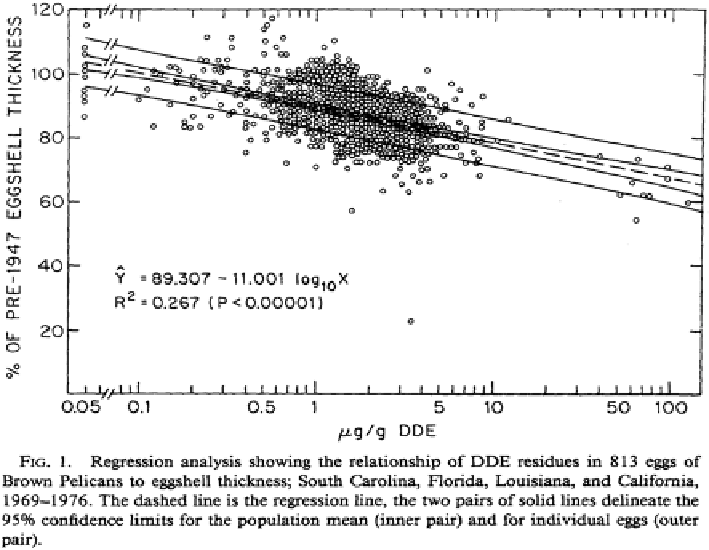Environmental Engineering Reference
In-Depth Information
Fig. 22
Regression of DDE residue and shell thickness in brown pelican eggs collected from 1969
to 1976. Figure 1 in Blus (
1984
) reproduced with permission from the author and from The Wilson
Journal of Ornithology
Gamble et al. (
1987
) reported on a 1986 study of a colony of brown pelicans
in Texas and two colonies in the Yucatan Peninsula in Mexico. DDE residues in
eggs from Texas averaged 0.16 ppm. These levels refl ected a tenfold decline from
1975 levels. The authors concluded: “The concentrations of the organochlorine
compounds in eggs from Texas and Mexico were below levels considered to be
harmful.”
In 1995, Franklin Gress published his doctoral thesis on 22 years of studies of
brown pelicans on Anacapa Island. DDE residues in eggs declined slowly during the
late 1970s and 1980s to approximately 2 ppm in 1992. Eggshells increased in thickness
during this period. Thinning was about 5% in 1992. Gress concluded: “… at present
we have no evidence that brown pelican reproduction in the SCB is measurably
impaired by DDE-related eggshell changes…” The only breeding colonies in the
Southern California Bight (SCB) are on West Anacapa Island, Santa Barbara Island
and Islas Los Coronados.
Discussion and conclusions
. To summarize the key fi ndings in the above chronology,
brown pelican reproduction was reduced by the direct action of the DDT metabolite,
DDE, during and after the DDT use era. DDE was magnifi ed up the aquatic food

Search WWH ::

Custom Search